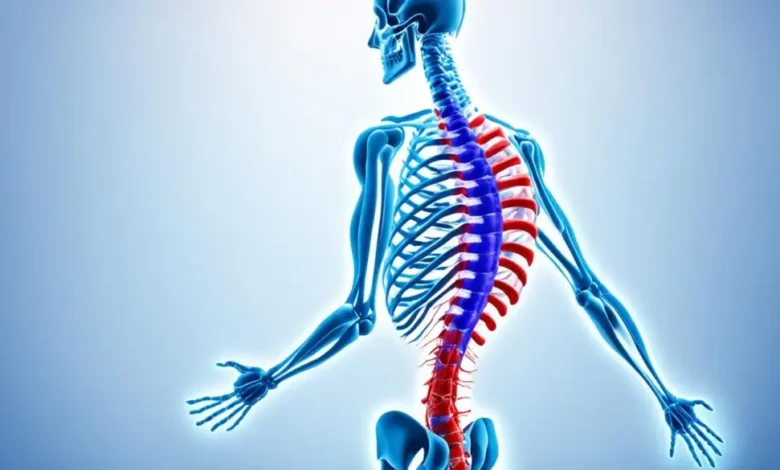Dr. Chandril Chugh Explains Brown-Sequard Syndrome Symptoms: What You Need to Know
Brown-Sequard Syndrome is a rare but significant condition affecting the spinal cord, leading to unique neurological symptoms. Understanding these symptoms is crucial for early diagnosis and effective management. In this blog, Dr. Chandril Chugh explains the Brown Sequard Syndrome Symptoms and provides valuable insights into this condition.
What is Brown-Sequard Syndrome?
Brown-Sequard Syndrome (BSS) occurs when there is damage to one-half of the spinal cord, resulting in a distinctive pattern of neurological deficits. This damage leads to motor, sensory, and autonomic dysfunction on opposite sides of the body, making it critical to recognize the symptoms early.
Causes of Brown-Sequard Syndrome
Understanding the causes of Brown-Sequard Syndrome helps in pinpointing the origin and developing treatment strategies:
- Trauma: Injuries such as stab wounds or gunshot wounds can cause hemisection of the spinal cord.
- Tumors: Spinal tumors that compress or invade one side of the spinal cord.
- Infections: Conditions like tuberculosis, syphilis, or herpes zoster can lead to spinal cord lesions.
- Degenerative Diseases: Conditions such as multiple sclerosis can cause demyelination of one side of the spinal cord.
- Ischemia: Reduced blood flow to the spinal cord due to vascular issues.
For a detailed overview of causes and symptoms, visit Dr. Chandril Chugh’s page on Brown-Sequard Syndrome Symptoms.
Key Symptoms of Brown-Sequard Syndrome
Dr. Chandril Chugh explains the hallmark symptoms of Brown-Sequard Syndrome, which arise from the asymmetrical damage to the spinal cord:
1. Ipsilateral Motor Deficits
- Paralysis: Loss of voluntary muscle control on the same side as the spinal cord lesion.
- Muscle Weakness: Significant weakness or loss of muscle function on the affected side, leading to impaired movement.
2. Contralateral Sensory Deficits
- Loss of Pain and Temperature Sensation: Loss of these sensations on the side opposite the injury.
- Normal Touch and Proprioception: These sensations are preserved on the opposite side but lost on the same side as the lesion.
3. Autonomic Dysfunctions
- Bladder and Bowel Control Issues: Disruptions in autonomic functions lead to difficulties in controlling bladder and bowel movements.
- Blood Pressure Variations: Irregularities in regulating blood pressure and heart rate.
4. Spasticity and Reflex Changes
- Increased Muscle Tone: Spasticity or increased muscle tone on the same side as the spinal cord injury.
- Hyperactive Reflexes: Heightened reflex responses on the affected side.
Diagnosing Brown-Sequard Syndrome
Diagnosis involves clinical evaluation and imaging studies to confirm the extent and location of the spinal cord damage:
- Neurological Examination: Assessment of motor, sensory, and reflex functions to identify the characteristic symptoms of Brown-Sequard Syndrome.
- Imaging Techniques: MRI or CT scans to visualize the spinal cord and determine the precise location of the injury.
Management and Treatment Options
Effective management of Brown-Sequard Syndrome involves a multidisciplinary approach, including medical, surgical, and rehabilitative interventions:
1. Medical Treatments
- Steroid Therapy: High-dose steroids may be administered to reduce inflammation and prevent further damage.
- Pain Management: Use of analgesics to manage pain resulting from nerve damage.
2. Surgical Interventions
- Decompression Surgery: To relieve pressure on the spinal cord caused by tumors, herniated discs, or hematomas.
- Spinal Stabilization: Procedures to stabilize the spine and prevent further injury in cases of trauma.
3. Rehabilitation Strategies
- Physical Therapy: Exercises designed to strengthen muscles, improve coordination, and enhance mobility.
- Occupational Therapy: Techniques to help patients regain independence in daily activities and adapt to any functional limitations.
4. Long-Term Management
- Regular Monitoring: Ongoing follow-up with a neurologist or spinal specialist to adjust treatment plans as needed.
- Psychological Support: Counseling and support groups to address the emotional and psychological impacts of living with Brown-Sequard Syndrome.
For comprehensive management strategies and expert advice, visit Dr. Chandril Chugh’s page on Brown-Sequard Syndrome Symptoms.
Self-Care and Lifestyle Recommendations
Incorporating self-care practices can improve the quality of life for individuals with Brown-Sequard Syndrome:
1. Stay Physically Active
Engage in regular exercise as advised by your healthcare provider to maintain muscle strength and flexibility.
2. Adapt Your Environment
Make necessary modifications to your living space to accommodate mobility challenges, such as installing handrails or using adaptive equipment.
3. Maintain a Nutritious Diet
Follow a balanced diet rich in vitamins and minerals to support overall health and recovery.
4. Seek Emotional Support
Join support groups or seek counseling to cope with the emotional challenges associated with this condition.
5. Stay Informed
Educate yourself about Brown-Sequard Syndrome and stay updated on new treatments and management options.
Conclusion
Understanding and managing the symptoms of Brown-Sequard Syndrome is crucial for improving the quality of life of those affected. With expert guidance from Dr. Chandril Chugh, individuals can navigate their symptoms and explore effective treatment options. For more detailed information and expert insights, visit Dr. Chandril Chugh’s page on Brown-Sequard Syndrome Symptoms.




